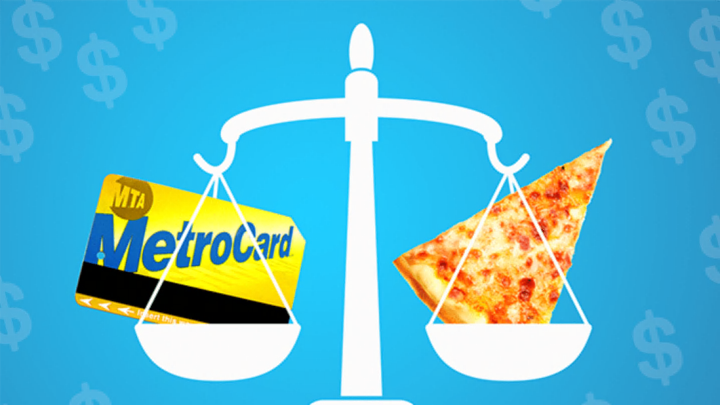The Pizza Principle: New York's Weirdest Economic Theory
By Anna Green

Ask any New Yorker, and they'll tell you definitively: The cost of a slice of pizza is always the same as the price of a ride on the subway. If the cost of one goes up, the other is soon to follow. But is there any truth to the myth? And where did it originate?
The actual origins of the Pizza Principle (as the pizza-subway fare connection is called in academic circles) are unknown. But the first mention of it appears in a 1980 New York Times article and is attributed to patent attorney Eric Bram. Bram claimed that since the early 1960s, “the price of a slice of pizza has matched, with uncanny precision, the cost of a New York subway ride.” That bold claim didn’t work its way into New York folklore immediately: Bram’s theory was buried in the Times’ “Metropolitan Diary,” a curated collection of anecdotes and poems written predominantly by New York locals. It wasn’t until 1985, when George Fasel—a writer, then employed at a bank—published a New York Times editorial entitled “If You Understand Pizza, You Understand Subway Fares,” that the theory received wide attention. In the article, Fasel quotes a wise (but unnamed) friend, who explained to him, “The transit token has no relationship to capital costs, union contracts, passenger miles, or depreciation schedules. Forget all that. The critical variables are flour, tomato sauce and mozzarella cheese.''
Since then, local journalists have frequently used the Pizza Principle (sometimes called the Fasel Corollary) either to predict upcoming hikes in subway fare, or retroactively confirm the inevitability of a raise. In January of 2002, for example, New York Times reporter Clyde Haberman predicted a raise in subway fares based on the recent change in prices at his neighborhood pizza place (“the pizza-token gap is so large these days that it is hard to see how the subwaymeisters can hold out for long”). Six months later, when the fare was ultimately raised, he published a sort of "I Told You So" article, writing, “It might be noted that a fare increase was predicted in this column six months ago, for reasons having nothing to do with budget deficits or subsidies... A slice of pizza, it was noted, costs $1.75 in much of the city, and runs to $2 or more in Midtown. In this environment, there is no way for the $1.50 fare, in place since 1995, to survive."
It's unclear whether the same kind of connection applies to other cities and their transportation systems. Hopefully there's some young economist out there working up a dissertation on the link between cheese steak prices and SEPTA fares in Philadelphia, clam chowder and CharlieCard costs in Boston, or Uber inflation and fluctuations in taco prices in Los Angeles. But for now, it's clear that New Yorkers wondering if the price of their daily subway ride is going up anytime soon can look to their local pizzeria for their answer.